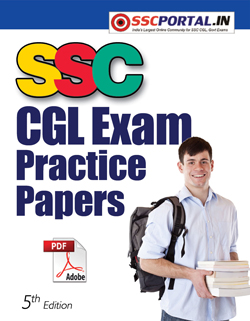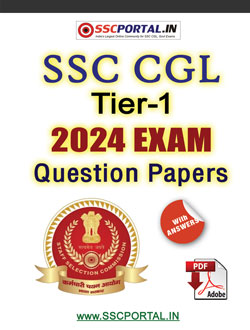(Guidance Programme) Combined Graduate Level Exam - Tier - II : Parts of Speech
Parts of Speech
Language is the major means by which we communicate and interact with others.
When we speak or write, we use words. These words are generally used in groups
e.g.: A bad workman quarrels with his tools.
A group of words arrange din a manner which makes a complete sense is called a
Sentence. Based on meaning and sense, the sentence can be classified as :
1. Declarative or assertive 2. Imperative
3. Interrogative 4. Exclamatory
Parts of Speech
Words are classified into different kinds or groups called Parts of Speech according to their use and function in a sentence. They are eight in number-Noun, Pronoun, Adjective, Verb, Adverb, Preposition, Conjunction and Interjection.
Noun
The Noun is a word used as the name of a person, place or thing. The word thing includes (i) all objects that we can see, touch, hear, smell or taste, and (ii) something we can think of but cannot perceive through our senses. There are five different kinds of noun.
They are:
1. Proper Noun
2. Common Noun
3. Collective Noun
4. Material Noun
5. Abstract Noun.
Pronoun
The repetition of a noun in a sentence or a set of sentences is really boring. So, Grammar prescribes that instead of repeating the noun, we may use a word (for that noun) called pronoun. This leads us to a precise definition of Pronoun.
The Pronoun is a word that we use instead of a noun.
Many people commit grammatical mistakes because they lack thorough knowledge
regarding the use of pronouns.
The following facts can be stated on the basis of the above definition:
(a) A pronoun must itself be something equivalent to a noun.
(b) As a rule, the pronoun should not be mentioned until the noun has been
mentioned.
(c) A pronoun must be of the same number, gender and person as the noun it
stands for.
Pronouns have numerous subclasses. Though there are several features that
pronouns have in common with nouns, yet there are some features which
distinguish them from nouns.
They are as follows:
(a) They do not admit determiners;
(b) They often have an objective case;
(c) They often have person distinction;
(d) They often have overt gender contrast;
(e) Singular and plural forms are often not morphologically related.






